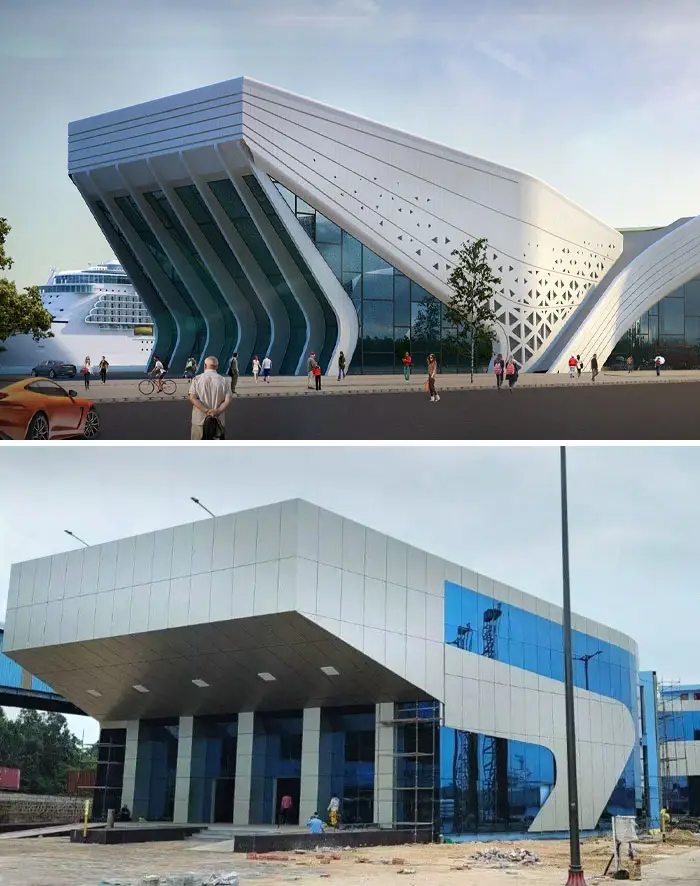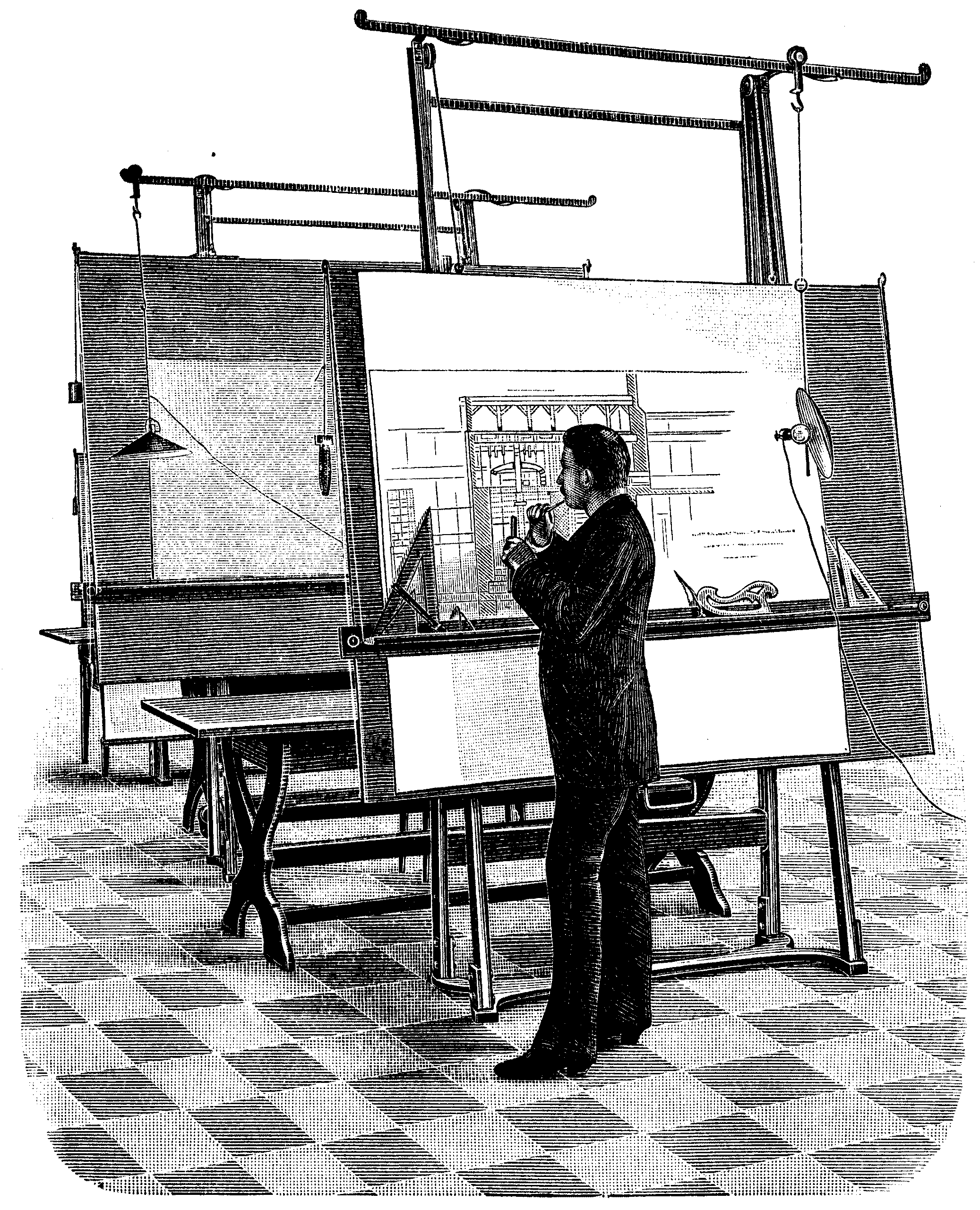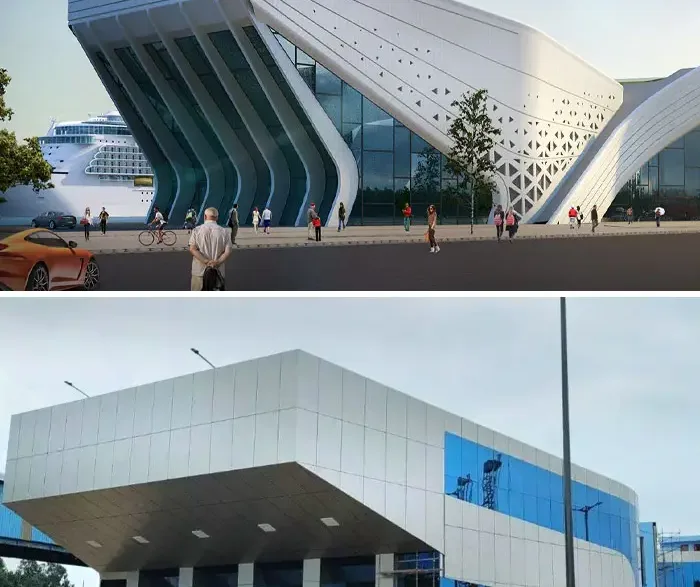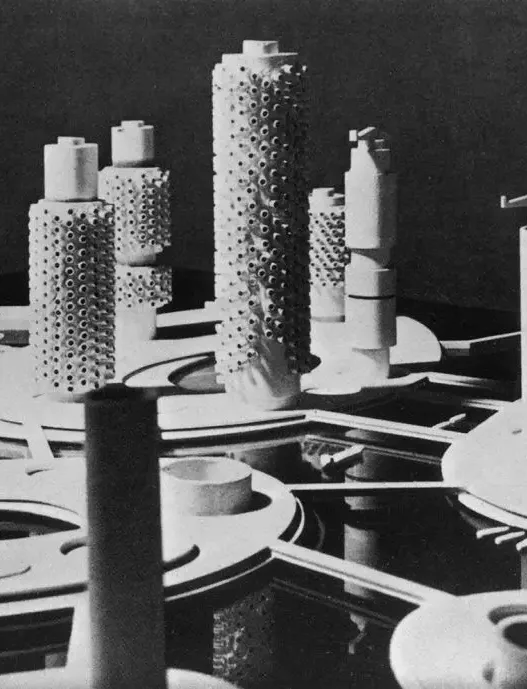Architecture is often viewed through a romanticised lens, full of grand designs and visionary concepts. But the profession encompasses much more than creativity and aesthetics. It is a complex field combining art and science, requiring a deep understanding of materials, structures and human behaviour. This introduction explores the multifaceted world of architecture, emphasising its definition, historical development, social significance, educational pathways and the impact of technology.

Definition of Architecture
In essence, architecture is the art and science of designing buildings and other physical structures. It involves not only the creation of functional spaces, but also the consideration of aesthetics, safety and environmental impact. Architects must ensure that their designs meet the needs of users while adhering to regulations and sustainability practices. Blending creativity with technical knowledge, this profession is a unique field that requires both artistic vision and practical skills.
Historical Context
The history of architecture is a fascinating journey that reflects the evolution of human civilisation. From ancient structures such as the Pyramids of Giza and the Parthenon to modern skyscrapers and sustainable buildings, each era has its own unique style and purpose. Historically, architecture has been influenced by cultural, technological and economic factors. For example, the Gothic cathedrals of the Middle Ages showcased complex designs and engineering advances, while the Industrial Revolution reshaped urban landscapes by introducing new materials such as steel and glass. Understanding this historical context enriches our appreciation of contemporary architectural practices and their roots.
The Importance of Architects in Society
Architects play a crucial role in shaping our environment and influencing the way we live, work and interact. They are responsible for creating spaces that not only fulfil daily activities but also enhance the well-being of society. Carefully designed buildings can promote health, encourage co-operation and provide a sense of identity. Moreover, by designing sustainable and inclusive spaces, architects tackle pressing issues such as urban sprawl, climate change and social inequality. Their work goes beyond individual projects; it impacts entire communities and contributes to the cultural and economic vitality of society.
Overview of Architectural Education
Becoming an architect requires rigorous education and training. Most architect candidates pursue an architecture degree, which typically includes a mix of design studios, history, theory and technical courses. This education is complemented by practical experience through internships where students apply their knowledge in real-world settings. After completing their degree, graduates are required to pass licensing exams and gain professional experience to be able to work independently. The educational journey is challenging, often requiring long hours and dedication, but it equips future architects with the skills necessary to meet the challenges of the profession.
The Role of Technology in Architecture
In recent years, technology has transformed the field of architecture by introducing new tools and methodologies that enhance the design and construction processes. Computer-aided design (CAD) software allows architects to create detailed models and simulations that streamline the design process and improve accuracy. Furthermore, advances in materials science have led to innovative construction techniques that promote sustainability and efficiency. Technologies such as Building Information Modelling (BIM) facilitate collaboration between architects, engineers and contractors, ensuring projects are completed on time and within budget. As technology continues to evolve, architects must adapt and integrate these developments into their practice, balancing tradition and innovation.
The reality of architecture as a career is a blend of creativity, technical expertise and social responsibility. While the idealised image often emphasises the glamour of design, the profession requires hard work, problem solving and a commitment to improving the built environment. As we delve deeper into the world of architecture, we begin to appreciate the complex interplay between artistic vision and practical application, revealing the true essence of what it means to be an architect.
Architecture is often seen as a blend of art and science, an endeavour that shapes the environments in which we live. While many people are drawn to the profession by its romanticised portrayals, the reality of an architectural career can be quite different. This research aims to examine the idealised image of architecture and to juxtapose it with the real experiences of those working in this field.
Idealised Image of Architecture
The idealised image of architecture evokes visions of grand designs, creative freedom and the ability to leave a lasting legacy. This image is often influenced by various factors such as iconic buildings, media representations and the glamour of architectural competitions.
Famous Architectural Icons
When we think of architecture, we immediately think of certain buildings, such as the Eiffel Tower in Paris, the Sydney Opera House or the Guggenheim Museum in New York. These architectural marvels are not just buildings; they are symbols of innovation and creativity. The architects behind these projects, such as Gustave Eiffel, Jørn Utzon and Frank Lloyd Wright, are renowned for their genius and artistic vision. Their works often serve as inspiration for aspiring architects who dream of creating something similarly monumental. But the reality is that not every architect will design an iconic structure. Most spend their careers working on smaller, less glamorous, but still vital projects for society.
Media Representations of Architects
Films, television programmes and literature often portray architects as visionary geniuses working in elegant offices with breathtaking views. Characters such as Howard Roark in Ayn Rand’s “The Fountainhead” epitomise the ideal of the passionate, uncompromising architect, while programmes such as “Grand Designs” highlight the creative process behind building unique homes. These portrayals can create a distorted perception that architecture is always full of glamour and dramatic moments of inspiration. In reality, the profession involves tedious tasks, extensive regulations and co-operation with various stakeholders, which are often overlooked in the media.
The Lure of Architectural Competitions
Architectural competitions are another element that increases the glamour of the profession. Winning a prestigious competition can jump-start an architect’s career and bring significant recognition. Competitions often provide an exciting narrative of creativity and ambition, showcasing groundbreaking designs and innovative ideas. But the competition environment can also be daunting. Many entries go unrecognised and the pressure to produce outstanding work can be overwhelming. In addition, these financial and time commitments often mean that many architects have to balance their competition participation with their normal workload, which can lead to stress and burnout.
Public Perception of the Architect’s Lifestyle
The lifestyle of architects is often idealised with images of trendy studios, travelling for inspiration and an abundance of creative freedom. This perception suggests that architects lead a life of artistic exploration and luxury. In reality, the daily life of an architect can be quite different. Long hours, tight deadlines and client meetings often get in the way of creative endeavours. Many architects work in teams, managing the complexities of collaboration that can dilute individual creative expression. The pressure to meet client expectations while adhering to budgets and timelines can overshadow the romantic vision of the profession.
Influential Architectural Trends
Throughout history, various architectural movements have defined the design landscape, from the splendour of Gothic architecture to the simplicity of Modernism. These movements often inspire current and future architects who look to the past for guidance and influence. But the reality is that the field of architecture is undergoing a constant evolution, driven by technology, sustainability and societal needs. While movements such as Brutalism or Deconstructivism can capture the imagination, many architects find themselves working within the parameters of contemporary practices that prioritise function and sustainability over pure artistic expression. The challenge lies in balancing innovation with practicality, a reality that many architects face every day.
In conclusion, while the idealised image of architecture captivates the imagination, the reality of a career in this field is multifaceted and often challenging. By understanding both the glamour and the realities, aspiring architects can better prepare themselves for a profession that, despite its challenges, is highly effective and rewarding.
Architecture is often romanticised in popular culture, portrayed as a glamorous profession full of creativity and visionary design. However, the day-to-day realities of being an architect can be quite different. It involves a mix of artistic vision and rigorous practicality and often requires skills that go beyond just design. In this research, we will shed light on what the profession actually entails by analysing the real experiences of architects.
Day by Day Realities of an Architect
Typical Working Environment
The working environment of an architect is a dynamic mix of creativity and technique. Most architects spend their days in offices equipped with the latest technology for design and drawing. Here they use advanced software to create detailed plans and 3D models, turning abstract ideas into concrete plans. The atmosphere can be both collaborative and competitive; teams work together to brainstorm and refine designs. However, architects also spend significant time in the field, overseeing construction projects and ensuring that what is built is in line with their vision. This duality of experience, moving from the office to construction sites, shapes unique perspectives on the built environment.
Time Management and Work-Life Balance
Time management is a critical skill for architects. Projects often have tight deadlines and require architects to juggle multiple tasks simultaneously. This can lead to periods of intense work, especially as deadlines approach. Many architects find themselves working late nights and weekends to meet client expectations or finalise designs. While some firms encourage a balanced work-life approach, the reality can be challenging, especially in competitive environments where long working hours are the norm. Finding a balance between maintaining creativity and preventing burnout is essential and drives many architects to seek firms that prioritise employee well-being.
Collaboration with other professionals
Architecture is collaborative by nature. Architects often work together with engineers, interior designers, landscape architects and contractors. This collaboration is crucial to the successful realisation of a project. Each professional brings a unique perspective and skill set to the table, and effective communication is key to navigating the complexities of design and construction. Architects must be adept at listening to others while advocating their own vision. This interaction often leads to innovative solutions and enriched designs that reflect a comprehensive understanding of the many aspects involved in the creation of a building.
Project Management Challenges
Project management is one of the most challenging aspects of an architect’s role. Architects must oversee not only the design, but also the logistics of bringing a project to life. This includes managing budgets, timelines and resources, as well as handling unforeseen challenges that arise during construction. Conflicts may arise between clients, contractors and local regulations, requiring architects to mediate and negotiate effectively. The ability to adapt to changing circumstances and maintain a clear vision is essential. This aspect of the job can be stressful, but it also provides a sense of accomplishment when a project is successfully completed.
Impact of Deadlines and Customer Demands
Deadlines and client demands can significantly shape an architect’s experience. Clients often have specific visions and expectations, which may not always align with practical considerations or budget constraints. Architects must manage these dynamics carefully, balancing creativity with feasibility. The pressure to deliver on time can lead to compromises in design quality or creativity, which can be frustrating for architects who are passionate about their work. However, meeting client expectations and seeing a project come to life can also be incredibly rewarding, providing a sense of purpose and achievement.
Ultimately, the reality of being an architect encompasses a rich tapestry of creativity, collaboration and management challenges. While the idealised image often emphasises the artistic aspects, the profession requires a complex understanding of the practicalities of both design and construction. As architects navigate their daily reality, they are constantly shaping the world around us and proving that architecture is as much about problem solving as it is about art.
Financial Aspects of an Architecture Career
Many people considering a career in architecture dream of the creative freedom of designing stunning buildings or the prestige that comes with the profession. However, the financial realities of being an architect can often differ significantly from this idealised image. Understanding the financial aspects of an architectural career is crucial for anyone wishing to enter this field, as it shapes not only their professional journey, but also their personal life.
Salary Expectations for Architects
Salary expectations for architects can vary widely depending on numerous factors, including geographic location, level of experience, and the type of firm they work for. In general, entry-level architects may start with a modest salary, which may come as a shock to those who have invested heavily in their education. As architects gain experience, their earning potential increases significantly. Senior architects or partners in established firms can earn impressive salaries that reflect their expertise and contribution to the industry. Furthermore, architects specialising in niche areas such as sustainable design or urban planning may find themselves earning higher salaries due to the demand for their skills. However, it is important to recognise that this career path often requires years of dedication before reaching a comfortable financial situation.
Cost of Architecture Education
A career in architecture typically requires a significant investment in education. Most aspiring architects must obtain a professional degree in architecture, which can take five to seven years to complete. Tuition fees can be high, and students often graduate with a significant amount of student loan debt. In addition to tuition, there are costs for materials, books, and potentially living expenses if attending school in a large city. Many students find that part-time jobs or internships during their studies can help alleviate some of this financial burden. However, the reality is that the cost of education can be a daunting barrier for many and can influence their decisions and opportunities in this area.
Financial Challenges in Starting a Company
For architects who dream of starting their own firm, the financial challenges can be particularly daunting. Start-up costs can be high, including office space, marketing and staff hiring expenses. Moreover, it takes time to build a client base and many new firms struggle to survive in their first year. This period can be fraught with uncertainty, as architects must balance their creative vision with practical commercial concerns. Effective financial planning and a good understanding of the market are crucial to overcome these initial hurdles. Many architects find it beneficial to start as part of an established firm to gain experience and insight into the commercial side of architecture before venturing out on their own.
The Importance of Networking for Financial Growth
Networking plays a vital role in the financial success of architects. Building relationships with clients, contractors and other architects can lead to referrals and opportunities for collaboration that would not otherwise be accessible. Engaging with professional organisations and participating in industry events can help architects expand their networks and gain visibility within the community. In many cases, the connections made through networking can directly impact an architect’s ability to secure projects and ultimately their financial stability. The field of architecture is often competitive, and having a solid network can provide a significant advantage in terms of both client acquisition and access to resources.
Long Term Financial Stability in Architecture
Ensuring long-term financial stability in architecture requires careful planning and adaptability. Architects must stay abreast of industry trends, economic changes and emerging technologies to remain relevant and competitive. Many successful architects diversify their services by offering design, consulting and project management to reduce the risks associated with relying on only one source of income. Furthermore, continuous professional development through workshops and certifications can enhance an architect’s skills, opening new avenues for income. In conclusion, while the architectural journey can be financially challenging, strategic planning and a commitment to growth can lead to a fulfilling and stable career.
In summary, while the idealised image of architecture often emphasises creativity and prestige, the financial aspects reveal a more complex reality. Aspiring architects can better prepare themselves for the financial realities of this rewarding yet challenging profession by understanding salary expectations, education costs, the challenges of starting a firm, the importance of networking, and long-term stabilisation strategies.
Architecture is often seen as a glamorous profession, full of creativity, innovation and the opportunity to shape the built environment. However, the reality is often more complex. While many people are drawn to architecture for its artistic potential and social impact, this career can also bring with it a range of emotional and mental challenges. Understanding these challenges is crucial for anyone considering a path in architecture.
Emotional and Mental Challenges in Architecture
The world of architecture is not just about plans and design; it is also an emotional landscape full of ups and downs. The pressures of the profession can significantly affect one’s mental health and general well-being. Recognising these challenges is important for a satisfying career in architecture.
Occupational Stress and Burnout
Architecture can be inherently stressful. The demands of meeting tight deadlines, managing complex projects and coordinating with various stakeholders contribute to a high-stress environment. Many architects work long hours, often sacrificing personal time and well-being. This relentless pace can lead to burnout, a state of emotional and physical exhaustion. Architects can feel overwhelmed and disconnected from their work, which can reduce creativity and productivity. The key to overcoming this is to develop effective time management strategies and set realistic goals that allow for a healthy work-life balance.
Dealing with Criticism and Rejection
In architecture, feedback is an integral part of the design process. However, the nature of this feedback can sometimes be harsh. Architects often face criticism from clients, colleagues and the public. This can be particularly challenging for those who put their heart and soul into their designs. Rejection of ideas can feel personal, leading to self-doubt and frustration. Learning to approach criticism constructively is crucial. Recognising feedback as an opportunity for growth, rather than a setback, can help architects strengthen their resilience and improve their work.
The Pressure of Creative Innovation
Architects are expected to be visionaries, constantly pushing the boundaries of design and innovation. This pressure to be creative can lead to intense anxiety, especially when faced with the need to produce ground-breaking work. Fear of failure can stifle creativity and lead to a cycle of second-guessing one’s abilities. To combat this, architects can benefit from developing a mindset that values experimentation and accepts failure as part of the creative process. Engaging in collaborative work can allow new ideas to emerge and relieve some of the pressure on individual creativity.
Finding Fulfilment in Architectural Work
Despite the challenges, many architects find deep fulfilment in their work. The ability to create spaces that improve people’s lives and contribute to communities can be incredibly rewarding. Architects are often proud to see their designs come to life, whether it’s a stunning public building or a cosy home. Enjoying the process, rather than focusing solely on the outcome, can provide greater fulfilment. Engaging with clients and communities throughout the design process can also strengthen the purpose behind the architectural work, making it more meaningful.
Support Systems and Mental Health Resources
Recognising the emotional toll of the profession, many architects turn to support systems to protect their mental health. Networking with colleagues, joining professional organisations and seeking mentorship can provide valuable emotional support. In addition, mental health resources such as counselling and workshops focusing on stress management and resilience are increasingly available to the architectural community. By prioritising mental wellbeing and seeking help when needed, architects can promote a healthier work environment and increase their overall career satisfaction.
In conclusion, while the image of architecture is one of creativity and prestige, in reality it requires overcoming significant emotional and mental challenges. By understanding these issues, aspiring architects can prepare themselves for a fulfilling career that balances the demands of the profession with personal well-being.
Architecture is often imagined as a glamorous profession, full of creativity, innovation and the ability to shape the physical world. However, this romanticised view tends to overshadow the complexities and challenges architects face in their daily lives. Understanding the balance between this idealised image and the reality of the profession is very important for architect candidates and those interested in this field.
Balancing Idealism and Reality in Architecture
The journey of an architect is a fascinating blend of art and science, creativity and practicality. While the glamour of designing iconic buildings and transforming urban landscapes conquers many hearts, the daily reality can be quite different. It requires long working hours, meticulous attention to detail and often overcoming bureaucratic hurdles. To truly appreciate the profession, it is necessary to recognise both its inspiring potential and its inherent challenges.
Reflections on Career Satisfaction
Career satisfaction in architecture is a multifaceted issue. Many architects derive great satisfaction from seeing their designs realised and contributing to the built environment. However, the pressure of deadlines, client expectations and the need for constant innovation can lead to stress and burnout. It is important for architects to consider what aspects of their work bring them joy. Taking part in projects aligned with personal values such as sustainability or community development can increase their satisfaction and create a sense of purpose in their professional lives.
Future of the Architecture Profession
As the world evolves, the role of architects is changing. The rise of technologies such as Building Information Modelling (BIM) and virtual reality are reshaping the way architects design and present their ideas. Sustainability has also become a key focus and architects are increasingly tasked with creating environmentally friendly structures that minimise their carbon footprint. The future of architecture promises exciting opportunities, but will require a willingness to adapt and adopt new methods and technologies.
Encouraging a Realistic Perspective
For those considering a career in architecture, it is vital to develop a realistic view of the profession. Whilst inspiration can be drawn from iconic buildings and the vision of changing landscapes, it is equally important to understand the work behind the scenes. This includes the collaborative nature of the field, where teamwork and communication play an important role in project success. By encouraging a balanced perspective, aspiring architects can prepare themselves for both the rewarding and challenging aspects of their careers.
Continuing Education and Adaptation
The architectural environment is constantly changing and this requires a commitment to lifelong learning. Continuing education is not just an option; it is a necessity to stay current in the field. Architects should keep abreast of new technologies, materials and design philosophies. Workshops, seminars and online courses provide opportunities for professional development and can trigger new ideas that foster creativity. Adapting to change is essential in a profession that thrives on innovation.
Final Thoughts on the Architect’s Journey
Ultimately, an architect’s journey is one of constant discovery and growth. Balancing the idealism associated with creative design with the reality of practical constraints is essential for a fulfilling career. By embracing both the inspiring and challenging aspects of architecture, individuals can chart fulfilling paths that not only satisfy their creative impulses but also contribute positively to society. In this journey, architects have a unique opportunity to blend vision with reality to create spaces that will resonate with people and communities for generations to come.






















